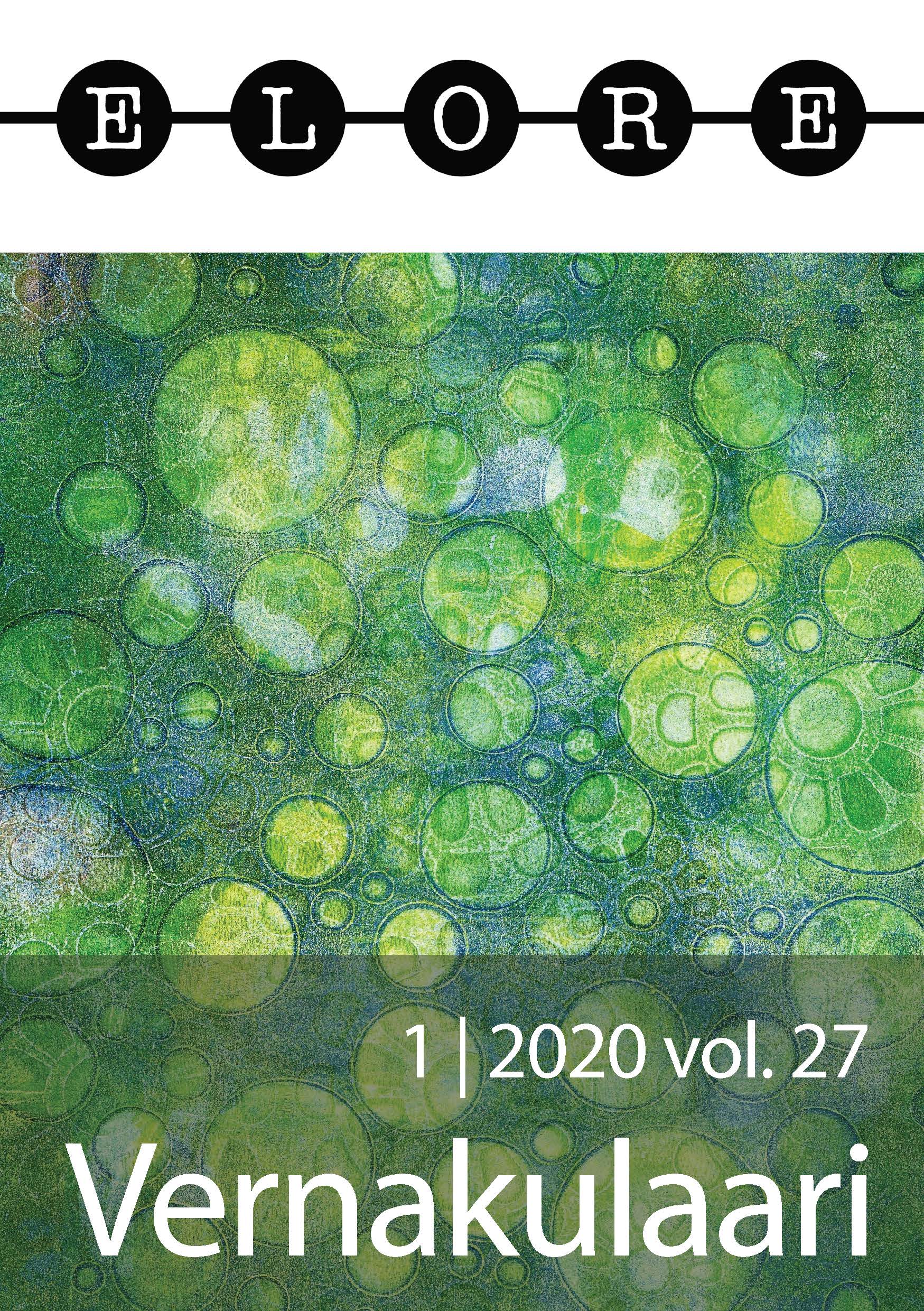The many levels of the vernacular
Perspectives on the Kalevala-metric epic Ilo-Laulu Jesuxesta
DOI:
https://doi.org/10.30666/elore.89057Abstract
This article examines the history of Finnish verse in the light of the concept of the vernacular.
During the past decades, the vernacular has become a general term for cultural phenomena that stand in opposition to the institutional and the formal. In linguistics and literary studies, the vernacular has been used to denote the European national languages as opposed to the cosmopolitan Latin and other literary languages of the learned elites, such as Greek. Alexander Beecroft (2015) describes the vernacular as a recurring process in world history, in which culture and written literature are created in a local language, as a reaction to the prevailing cosmopolitan culture of the elites. The concept has also been applied to non-verbal activities, such as architecture and music. Unlike the concepts that include words nation, folk or popular, the vernacular is not tied to a specific group or class, while still recognizing the affiliation between forms of expression and social hierarchies. As a form of speech or as a cultural expression, the vernacular resembles the concept of linguistic register.
This article examines the history of the poetic languages in Finnish verse and particularly in the epic poem Ilo-Laulu Jesuxesta by Lutheran clergyman Matthias Salamnius, published in 1690. Ilo-Laulu is a literary poem, composed according to the traditional oral metre, the Kalevala-metre, and it stands in relation to both the local oral tradition and the cosmopolitan literary tradition. By creating a dynamic discussion between the vernacular in literary and folklore studies, we explore the possibilities the concept opens for examining the history and usage of poetic registers as well as the historical dynamics between rhymed, stanzaic verse forms and Kalevala-metric verse. The article focuses on three different aspects or actualizations of the vernacular: 1) the vernacular as literarization and creation of a written poetic language in Finnish; 2) the vernacular as oral popular culture, on which literary culture can build, or which it can use as material or seek to replace; and 3) the vernacular as oral culture, capable of embracing elements from literary culture. Finally, we discuss the metrical and social changes of Finnish verse through the concept of enregisterment.

Downloads
Published
How to Cite
Issue
Section
License
The journal follows Diamond Open Access publishing model: the journal does not charge authors and published texts are immediately available on the Journal.fi service for scientific journals. By submitting an article for publication on Elore, the author agrees, as of September 2024, that the work will be published under a CC BY 4.0 licence. Under the licence, others may copy, transmit, distribute and display the copyrighted work and any modified versions of the work based on it only if they attribute the licence, the original publication (link or reference) and the author as the original author. Any modifications made must be acknowledged.
Copyright of the texts remains with the authors, and self-archiving (Green OA) of the published version is allowed. This also applies to texts published before September 2024. The Green OA publication must include Elore's publication details.
The metadata for published articles is licensed under Creative Commons CC0 1.0 Universal.





